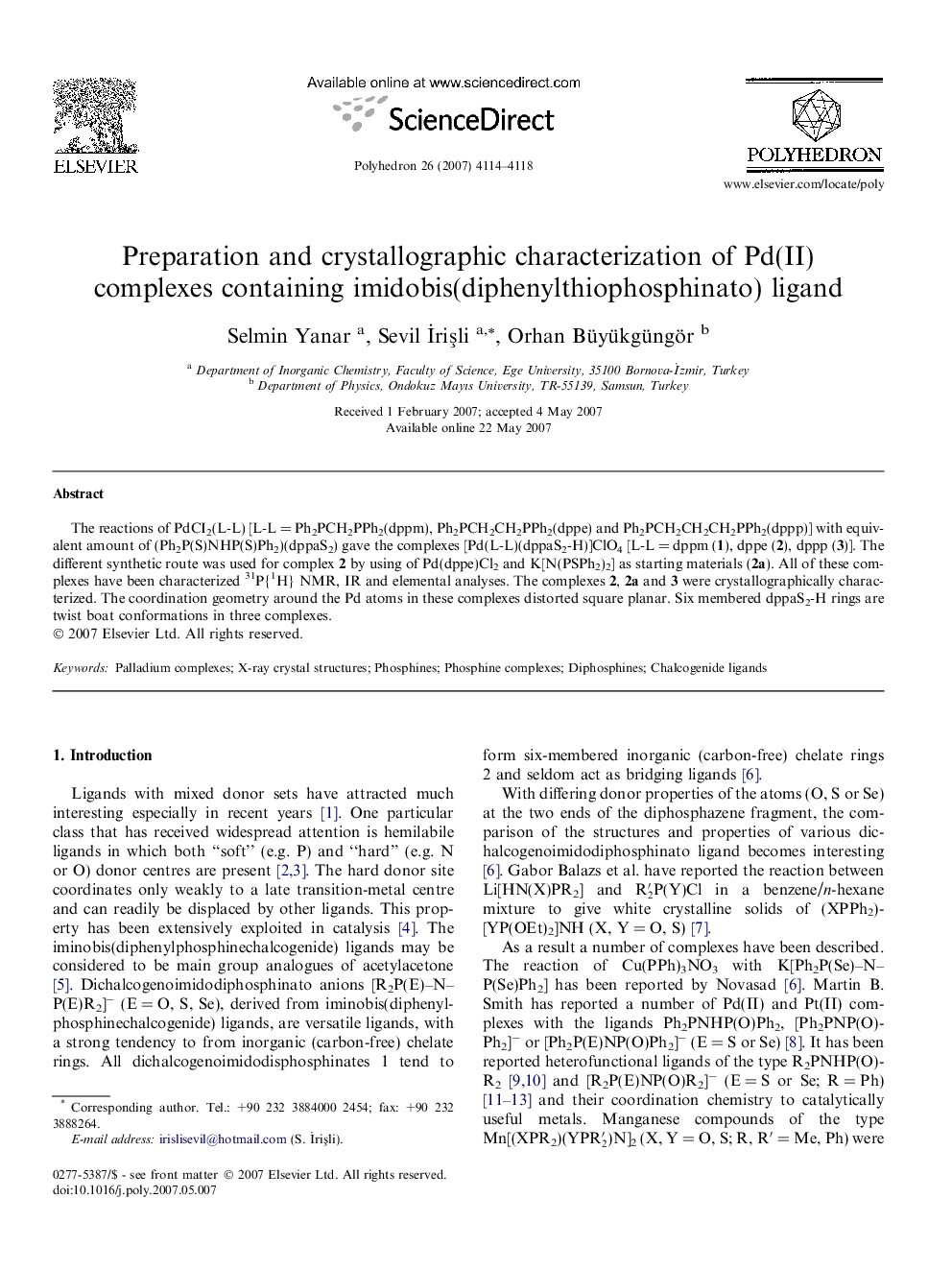| Article ID | Journal | Published Year | Pages | File Type |
|---|---|---|---|---|
| 1338287 | Polyhedron | 2007 | 5 Pages |
The reactions of PdCI2(L-L) [L-L = Ph2PCH2PPh2(dppm), Ph2PCH2CH2PPh2(dppe) and Ph2PCH2CH2CH2PPh2(dppp)] with equivalent amount of (Ph2P(S)NHP(S)Ph2)(dppaS2) gave the complexes [Pd(L-L)(dppaS2-H)]ClO4 [L-L = dppm (1), dppe (2), dppp (3)]. The different synthetic route was used for complex 2 by using of Pd(dppe)Cl2 and K[N(PSPh2)2] as starting materials (2a). All of these complexes have been characterized 31P{1H} NMR, IR and elemental analyses. The complexes 2, 2a and 3 were crystallographically characterized. The coordination geometry around the Pd atoms in these complexes distorted square planar. Six membered dppaS2-H rings are twist boat conformations in three complexes.
Graphical abstractThe reactions of PdCI2(L-L) [L-L = Ph2PCH2PPh2(dppm), Ph2PCH2CH2PPh2(dppe) and Ph2PCH2CH2CH2PPh2 (dppp)] with an equivalent amount of (Ph2P(S)NHP(S)Ph2)(dppaS2) gave the complexes [Pd(L-L)(dppaS2-H)]ClO4 [L-L = dppm (1), dppe (2), dppp (3)]. The different synthetic route was used for complex 2 by using of Pd(dppe)Cl2 and K[N(PSPh2)2] as starting materials (2a). The complexes 2, 2a and 3 were crystallographically characterized.Figure optionsDownload full-size imageDownload as PowerPoint slide
